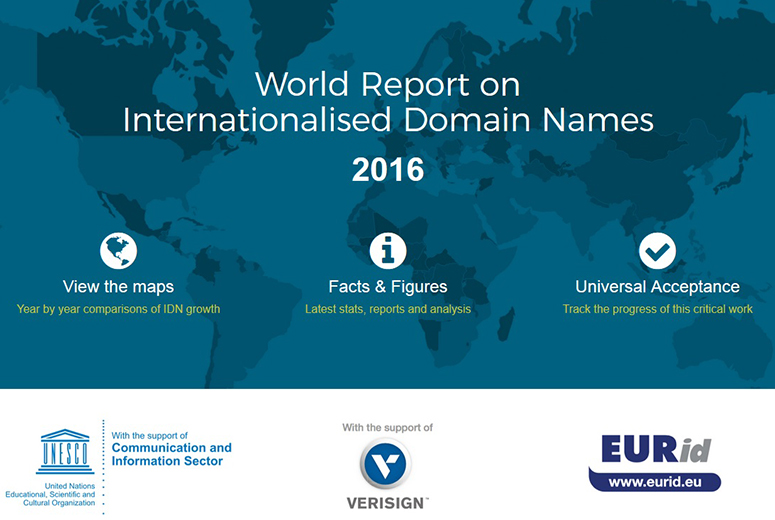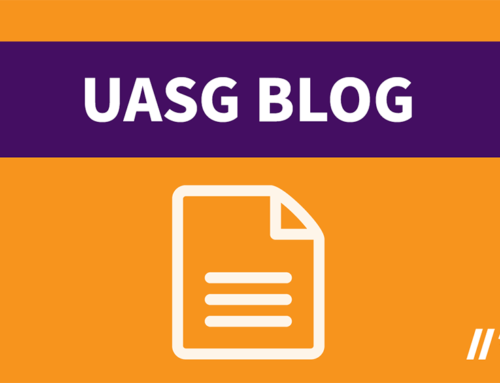By Don Hollander
Each year, EURid, the manager for the .eu and .ею top-level domains, publishes the World Report on Internationalised Domain Names (IDN), authored by Oxford Information Labs. As we look toward the 2017 report to be published later this year, we wanted to revisit some interesting findings from the 2016 report that are worth calling out. In particular, the latest report showed that IDNs (i.e., domain names in non-Latin based scripts) are growing at a rate of about 9 percent, significantly faster than the general growth of domain names.
IDNs have been available at the second level of ASCII (Latin-based) top-level domains (TLDs), for some years, for example, probestück.info, which has the international character ü. But in 2010, the first IDNs at the top level were launched in countries including Egypt, Russia, China and Thailand. This was the first time that Internet users in those countries could register and access websites using only their native scripts.
Since then, more than 100 non-ASCII scripts have become available as top-level domains (i.e., 在线 – Chinese for “online” and .онлайн – Russian for “online”) and nearly 400 ASCII TLDs offer IDNs at the second level, allowing communities to have choice and competition for their name space.
The annual World Report on IDNs, a cooperation between EURid, UNESCO, Verisign and the regional ccTLD organisations, provides a rich evidence base on the registration and usage of IDNs. Its main conclusions are that:
- IDNs help enhance linguistic diversity in cyberspace
- IDNs are accurate predictors of the language of web content
- The IDN market is more balanced in favour of emerging economies
Analysis of web content associated with IDNs shows a different pattern to traditional ASCII domain names. Languages such as Chinese, Japanese, German, Russian, Vietnamese and Korean have a stronger presence as a proportion of IDN web languages. Moreover, IDNs are reliable signals of what language will be found online, with a near perfect correlation between IDN script and web content language.
While the most popular place for IDNs remains .com, with more than 1 million IDNs registered at the second level, Vietnam’s ccTLD (.vn) is not far behind.
The most popular IDN scripts in use are Latin-based scripts, Han (for Chinese language) and Cyrillic (for Russian language).
A heat map shows that IDNs tend to be more heavily distributed in the Asia Pacific region. Again, this is a different pattern to ASCII domains, where North America and Western Europe are market leaders. IDNs therefore have the potential to provide enormous economic benefits for the domain name industry in emerging economies. However, the economic dividends will not be achieved unless rapid progress is made to enable Universal Acceptance.
The 2015 World Report on IDNs highlighted the work of the Universal Acceptance Steering Group. The latest World Report on IDNs again highlights the UASG and joins our call for Universal Acceptance to accelerate the diversity of domain names and email addresses. To read the full report, go to http://idnworldreport.eu.
Anyone interested in learning more about the UASG or getting involved can do so by visiting https://uasg.tech/.


 World Report on Internationalised Domain Names: The Growth of IDNs and Enhancing Linguistic Diversity in Cyberspace
World Report on Internationalised Domain Names: The Growth of IDNs and Enhancing Linguistic Diversity in Cyberspace


